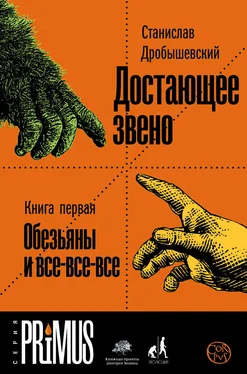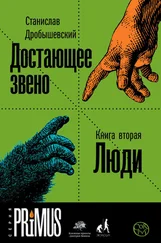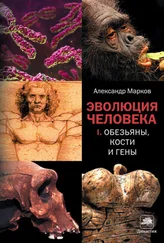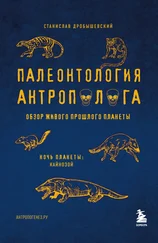Gebo D. L., Dagosto M., Beard K. Ch., Qi T. et Wang J. The oldest known anthropoid postcranial fossils and the early evolution of higher primates // Nature, 2000, V. 404, № 6775, pp. 276–278.
Gebo D. L., Dagosto M., Beard K. Ch. et Qi T. Middle Eocene primate tarsals from China: implications for haplorhine evolution // AJPhA, 2001, V. 116, № 2, pp. 83–107.
Gebo D. L., Gunnell G. F., Ciochon R. L., Takai M., Tsubamoto T. et Egi N. New eosimiid primate from Myanmar // JHE, 2002, V. 43, № 4, pp. 549–553.
Gebo D. L., Dagosto M., Beard K. Ch., Ni X. et Qi T. A haplorhine first metatarsal from the Middle Eocene of China // Elwyn Simons: A Search for Origins . Eds. J. G. Fleagle et C. C. Gilbert. Springer, 2008, pp. 229–242.
Gerrienne P., Meyer-Berthaud B., Fairon-Demaret M., Streel M. et Steemans P. Runcaria, a Middle Devonian seed plant precursor // Science, 2004, V. 306, № 5697, pp. 856–858.
Gheerbrant E. Paleocene emergence of elephant relatives and the rapid radiation of African ungulates // PNAS, 2009, V. 106, № 26, pp. 10717–10721.
Gheerbrant E., Sudre J. et Cappetta H. A Palaeocene proboscidean from Morocco // Nature, 1996, V. 383, № 6595, pp. 68–71.
Gilbert Ch. C. Dietary ecospace and the diversity of euprimates during the Early and Middle Eocene // AJPhA, 2005, V. 126, № 3, pp. 237–249.
Gingerich P. D. Cranial anatomy and evolution of early Tertiary Plesiadapidae (Mammalia, Primates) // Contributions from the Museum of Paleontology, The University of Michigan, 1976, V. 15, pp. 1–140.
Gingerich Ph. D. Cranial morphology and adaptations in Eocene Adapidae . I. Sexual dimorphism in Adapis magnus and Adapis parisiensis // AJPhA, 1981, V. 56, № 3, pp. 217–234.
Gingerich P. D. Primate evolution // Mammals. Notes for a short course . Eds. P. D. Gingerich et C. E. Badgley. Univ. Tennessee, Studies Geol., 1984, V. 8, pp. 167–181.
Gingerich P. Early Eocene bats (Mammalia: Chiroptera) and other vertebrates in freshwater limestones of the Willywood formation, Clark's Fork Basin, Wyoming // Contributions from the Museum of Paleontology, The University of Michigan, 1987, V. 27, pp. 275–320.
Gingerich Ph. D. et Martin R. D. Cranial morphology and adaptations in Eocene Adapidae. II. The Cambridge skull of Adapis parisiensis // AJPhA, 1981, V. 56, № 3, pp. 235–257.
Gladman J. T., Boyer D. M., Simons E. L. et Seiffert E. R. Calcaneus attributable to the primitive Late Eocene anthropoid Proteopithecus sylviae: phenetic affinities and phylogenetic implications // AJPhA, 2013, V. 151, № 3, pp. 372–397.
Godinot M. Lemuriform origins as viewed from the fossil record // Folia Primatologica, 2006, V. 77, № 6, pp. 446–464.
Gommery D., Ramanivosoa B., Faure M., Guérin C., Kerloc'h P., Sénégas F. et Randrianantenaina H. Les plus anciennes traces d'activités anthropiques de Madagascar sur des ossements d'hippopotames subfossiles d'Anjohibe (Province de Mahajanga) // Comptes Rendus Palevol, 2011, V. 10, № 4, pp. 271–278.
Gonzales L. A., Benefit B. R., McCrossin M. L. et Spoor F. Cerebral complexity preceded enlarged brain size and reduced olfactory bulbs in Old World monkeys // Nature Communications, 2015, V. 6, № 7580, pp. 1–9.
Goodman M., Porter C. A., Czelusniak J., Page S. L., Schneider H., Shoshani J., Gunnell G. et Groves C. P. Toward a phylogenetic classification of Primates based on DNA evidence complemented by fossil evidence // Molecular Phylogenetics and Evolution, 1998, V. 9, № 3, pp. 585–598.
Goswami A., Prasad G. V. R., Upchurch P., Boyer D. M., Seiffert E. R., Verma O., Gheerbrant E. et Flynn J. J. A radiation of arboreal basal eutherian mammals beginning in the Late Cretaceous of India // PNAS, 2011, V. 108, № 39, pp. 16333–16338.
Gowlett J., Gamble C. et Dunbar R. Human evolution and the archaeology of the social brain // Current Anthropology, 2012, V. 53, № 6, pp. 693–722.
Groves C. et Shekelle M. The genera and species of Tarsiidae // International Journal of Primatology, 2010, V. 31, № 6, pp. 1071–1082.
Gunnell G. F. et Ciochon R. L. Revisiting primate postcrania from the Pondaung Formation of Myanmar. The purported anthropoid astragalus // Elwyn Simons: А Search for Origins. Eds. J. G. Fleagle et C. C. Gilbert. Springer, 2008, pp. 211–228.
Haile-Selassie Y., Saylor B. Z., Deino A., Levin N. E., Alene M. et Latimer B. M. A new hominin foot from Ethiopia shows multiple Pliocene bipedal adaptations // Nature, 2012, V. 483, № 7391, pp. 565–570.
Halenar L. B. Reconstructing the locomotor repertoire of Protopithecus brasiliensis. I. Body size // The Anatomical Record, 2011, V. 294, № 12, pp. 2024–2047.
Hammer M. F., Woerner A. E., Mendez F. L., Watkins J. C. et Wall J. D. Genetic evidence for archaic admixture in Africa // PNAS, 2011, V. 108, № 37, pp. 15123–15128.
Hamrick M. W., Rosenma B. A. et Brush J. A. Phalangeal morphology of the Paromomyidae (?Primates, Plesiadapiformes): the evidence for gliding behavior reconsidered // AJPhA, 1999, V. 109, № 3, pp. 397–413.
Hand S. J., Novacek M., Godthelp H. et Archer M. First Eocene bat from Australia // Journal of Vertebrate Paleontology, 1994, V. 14, № 3, pp. 375–381.
Hardus M. E., Lameira A. R., Zulfa A., Atmoko S. S. U., Vries de H. et Wich S. A. Behavioral, ecological, and evolutionary aspects of meat-eating by Sumatran orangutans (Pongo abelii) // International Journal of Primatology, 2012, V. 33, № 2, pp. 287–304.
Hardy K., Buckley S., Collins M. J., Estalrrich A., Brothwell D., Copeland L., García-Tabernero A., García-Vargas S., Rasilla de la M., Lalueza-Fox C., Huguet R., Bastir M., Santamaría D., Madella M., Wilson J., Fernández Cortés Á. et Rosas A. Neanderthal medics? Evidence for food, cooking, and medicinal plants entrapped in dental calculus // Naturwissenschaften, 2012, V. 99, pp. 617–626.
Harrison T. New fossil anthropoids from the middle Miocene of East Africa and their bearing on the origin of the Oreopithecidae // AJPhA, 1986, V. 71, № 3, pp. 265–284.
Harrison T. et Yumin G. Taxonomy and phylogenetic relationships of early Miocene catarrhines from Sihong, China // JHE, 1999, V. 37, № 2, pp. 225–277.
Hartenberger J.-L. Hypothèse paléontologique sur l'origine des Macroscelidea (Mammalia) // CRAS, ser. II, 1986, V. 302, pp. 247–249.
Harvati K., Stringer Ch., Grün R., Aubert M., Allsworth-Jones Ph. et Folorunso C. A. The Later Stone Age calvaria from Iwo Eleru, Nigeria: morphology and chronology // PLoS ONE, 2011, V. 6, № 9, e24024, pp. 1–8.
Heizmann E. P. J. et Begun D. R. The oldest Eurasian hominoid // JHE, 2001, V. 41, № 5, pp. 463–481.
Henneberg M., Eckhardt R. B., Chavanaves S. et Hsü K. J. Evolved developmental homeostasis disturbed in LB 1 from Flores, Indonesia, denotes Down syndrome and not diagnostic traits of the invalid species Homo floresiensis // PNAS, 2014, V. 111, № 33, pp. 11967–11972.
Henry A. G., Brooks A. S. et Piperno D. R. Microfossils in calculus demonstrate consumption of plants and cooked foods in Neanderthal diets (Shanidar III, Iraq; Spy I and II, Belgium) // PNAS, 2011, V. 108, № 2, pp. 486–491.
Hershkovitz I., Kornreich L. et Laron Z. Comparative skeletal features between Homo floresiensis and patients with primary growth hormone insensitivity (Laron syndrome) // AJPhA, 2007, V. 134, № 2, pp. 198–208.
Hochuli P. A. et Feist-Burkhardt S. Angiosperm-like pollen and Afropollis from the Middle Triassic (Anisian) of the Germanic Basin (Northern Switzerland) // Frontiers Plant Science, 2013, V. 4, p. 344.
Читать дальше
Конец ознакомительного отрывка
Купить книгу








![Станислав Дробышевский - Палеонтология антрополога. Книга 1. Докембрий и палеозой [litres]](/books/404766/stanislav-drobyshevskij-paleontologiya-antropologa-thumb.webp)



